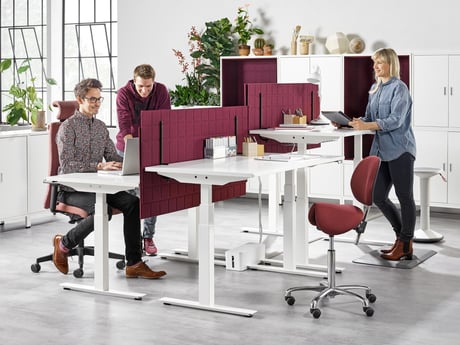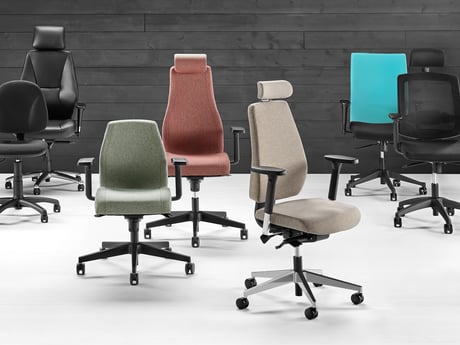Could returning to the COVID-secure workplace create other hazards?

GUEST BLOG
Government guidelines require businesses to be "COVID-secure" before they can reopen for staff and members of the public. The specific measures you’ll need to take will depend on your industry, but the general advice includes now-familiar steps like social distancing and frequent cleaning.
By following the guidelines blindly, however, there is a risk that well-meaning efforts to reduce coronavirus transmission will create new hazards, or worsen existing risks.
Is your COVID risk assessment fit for purpose?
A COVID-specific risk assessment is the first step to managing virus transmission. The Health and Safety Executive and gov.co.uk websites have detailed guidance on how to carry out this assessment.
The assessment should be carried out with reference to your business’s existing health and safety policies, to avoid confusion and conflicting policies. If staff or visitors are faced with conflicting or unfamiliar guidance, they will likely stick to the basic coronavirus rules, even if doing so creates other hazards.
Where a new policy overrides your existing health and safety procedure, you should clearly explain the changes and the reasons for making them. Possible issues include:
- Increasing the frequency of in-hours cleaning could increase the risk of a fall on a slippery floor, or tripping over cleaning equipment.
- If staff are not familiar with stronger cleaning products, or are not trained to use the correct PPE, there is a risk of injury from burns, eye injuries or dermatitis.
- Socially-distanced workstations could block fire escape routes, or increase the risk of trip hazards if power cables and other wiring is not managed.
- If the risk assessment calls for better ventilation and air flow, windows and doors must be safe to operate. Fire doors, unsafe windows, and doors that create an obstruction hazard when opened should be clearly marked.
- If new one-way systems or queueing routes are implemented, are hazards like steps and low ceilings clearly marked?
Where the risk assessment identifies a COVID risk, any measures should be weighed up against existing hazards. As with all health and safety management, the goal is to take reasonable steps to remove or mitigate risks. Businesses are not expected to take extreme measures to reduce an already-low risk of transmission to zero, if it would be costly and disruptive to do so.
You should also consider potential measures with reference to the confusion they could cause.
Keep it simple
Staff, visitors and customers will be nervous about returning to shops and businesses. Simple and familiar guidance will be reassuring, making it evident that you have considered the risks and managed them appropriately.
Chris Salmon, director of occupational injury specialists Quittance.co.uk said, "Unfamiliar rules, complex queuing systems and other measures may be safer on paper, but challenging to follow in practice. A simple instruction that is consistent with general guidance on virus transmission may be a better choice."
The purpose of storage units, bins and any new equipment should be obvious, and their location easily accessible.
Clear signage and information
Signage, floor stickers and other markers should be used to make it as easy as possible to understand and follow the new rules. In addition, signs, barriers and floor markers that are now inaccurate or potentially confusing should be removed or replaced.
Other existing but non-essential signage should be reviewed and removed if possible to help people focus on the new directives. Signs required by health and safety regulations, like those indicating fire exits, must be kept.
If staff and visitors are using the space in new ways as a result of the COVID rules, you should also consider whether existing lighting is sufficient.
The right tool for the job
Many tasks (particularly in retail, hospitality and warehousing) require two or more staff working closely together. If the risk of transmission in these cases is too high, and PPE is impractical, other tools should be supplied to help a single person perform the same job.
Lifting heavy items or manual handling in awkward spaces carries an ever-present risk of back strain and other musculoskeletal injuries. Where these problems would have been solved in the past by mandating two people lift heavy items, you should consider lifting aids like lift tables and shelf trolleys.
Observing and evolving your business’s approach
It’s important that you get the basics in place when staff return to work and your business reopens, but don’t expect to get it all right the first time.
If possible, you should monitor how staff and members of the public actually behave when faced with the new rules. Are signs being read and understood? Has the practical implementation of the measures revealed any risks you hadn’t considered?
Expect to evolve your business’s COVID-secure measures over time, and set aside time to consult with staff about the success of the new measures. You should make it clear that "your door is always open" to discuss any urgent concerns. If your employees understand and have confidence in the new measures, they are more likely to follow them, and will be more able to help members of the public also follow the rules.
Building confidence in a safe workplace is a critical step in helping your business recover, and clear, effective rules will help to ensure your employees, customers and business remain as safe as possible.



